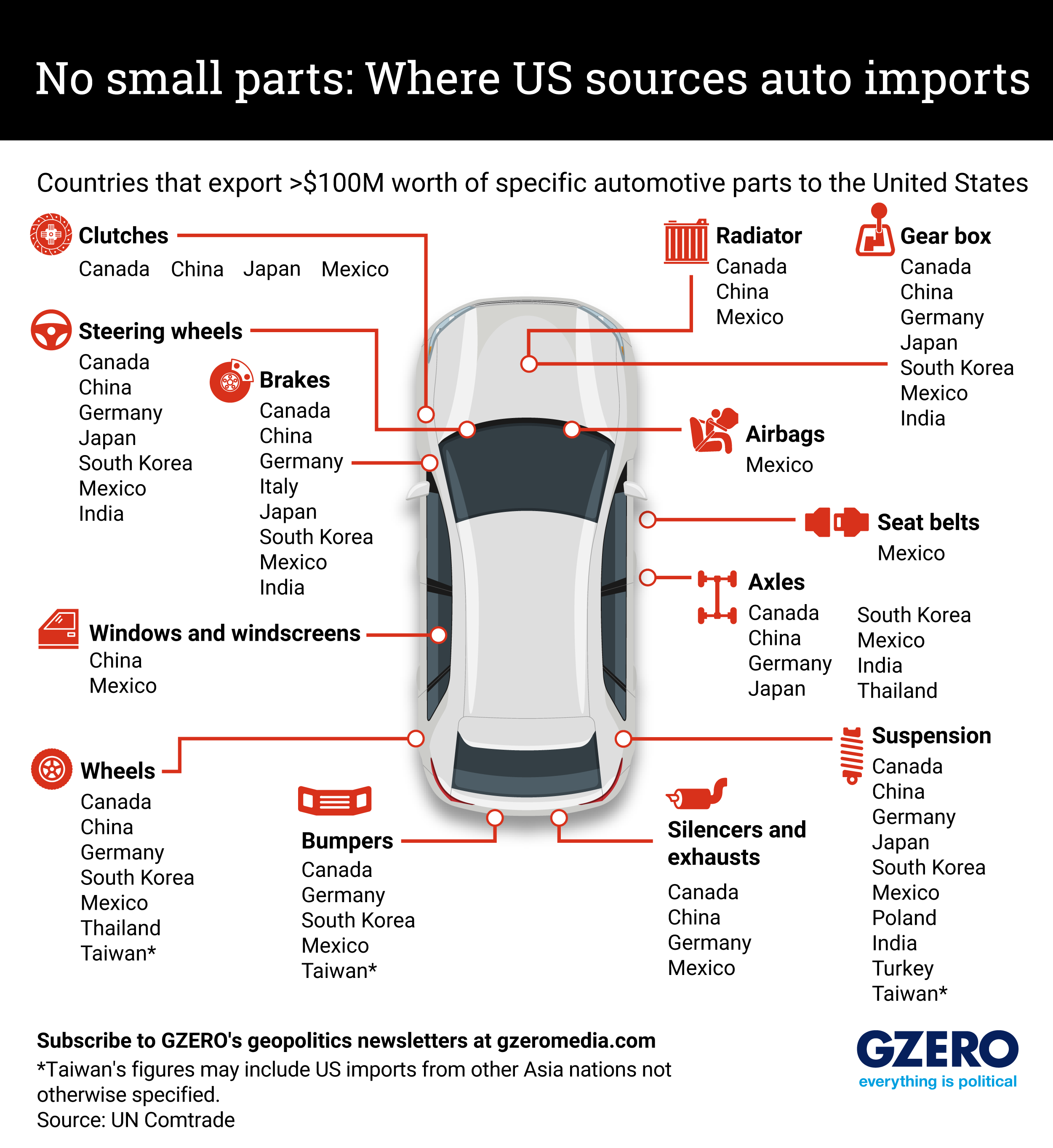and
April 03, 2025
As part of the broad suite of tariffs that he imposed on April 2, US President Donald Trump introduced a 25% levy on all auto parts entering the United States.
No matter the part, US automakers import huge amounts of each vehicle from abroad. The United States, for example, purchased $3.3 billion worth of brakes from Mexico and $2.8 billion of silencers and exhausts from Japan last year.
This chart excludes some of the mechanics of a car, such as engines, many of which are also imported from abroad. In fact, not a single car currently available in the US domestic market is 100% American-made, according to the National Highway Traffic Safety Administration. So, unless US parts manufacturers can plug the gaps, car companies are on the road to higher production costs.More For You
- YouTube
In this episode of "ask ian," Ian Bremmer breaks down Notre Dame football.
Most Popular
Geoffrey Hinton, the ‘Godfather of AI,’ joins Ian Bremmer on the GZERO World podcast to talk about how the technology he helped build could transform our lives… and also threaten our very survival.
- YouTube
Is the AI jobs apocalypse upon us? On Ian Explains, Ian Bremmer breaks down the confusing indicators in today’s labor market and how both efficiency gains as well as displacement from AI will affect the global workforce.
Members of the Uyghurs diaspora gather in front of Alberta Legislature during the protest 'Stand in Support of East Turkistan' to commemorate the 1990 Barin Uprising, on April 6, 2024, in Edmonton, Alberta, Canada. The East Turkestan independence movement seeks the region's independence for the Uyghur people from China. They advocate renaming the region from Xinjiang to East Turkestan, its historical name.
Photo by Artur Widak/NurPhoto
Remember Xinjiang? There was a time, not long ago, when China’s crackdown on the Uyghurs, a Muslim minority group living in Xinjiang province in Northwestern China, was a hot topic. But these days the attention has faded.
© 2025 GZERO Media. All Rights Reserved | A Eurasia Group media company.
